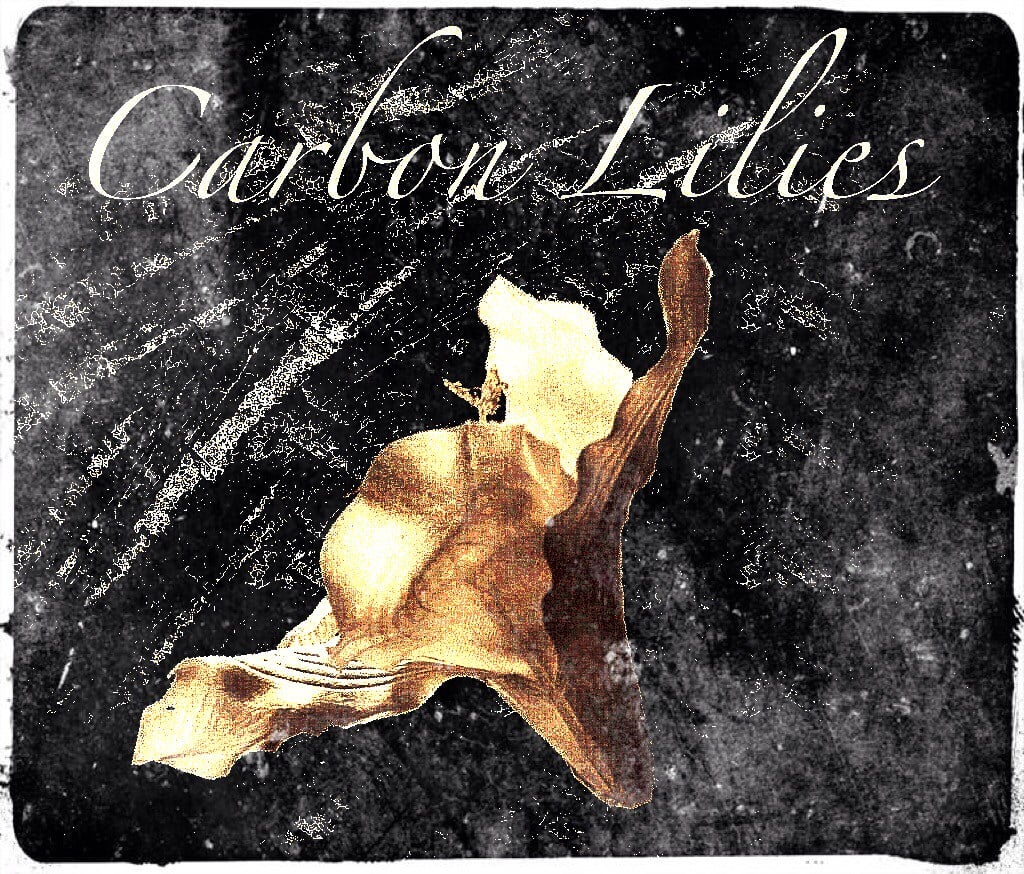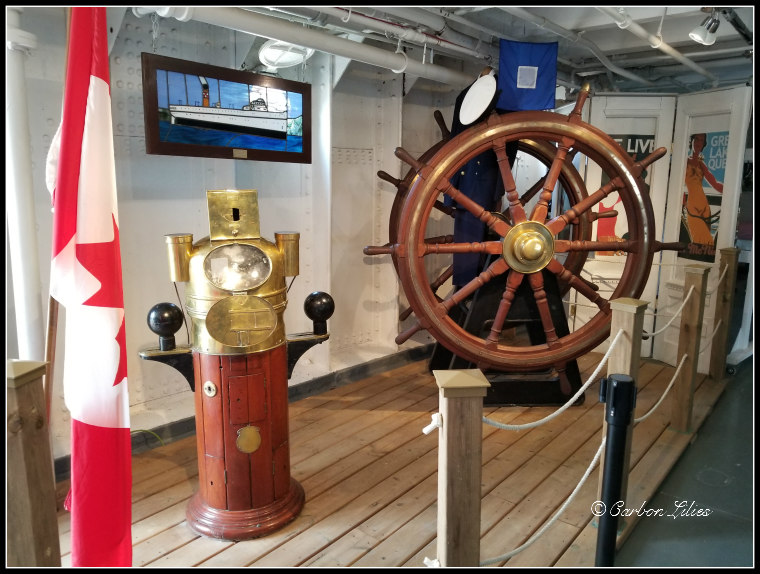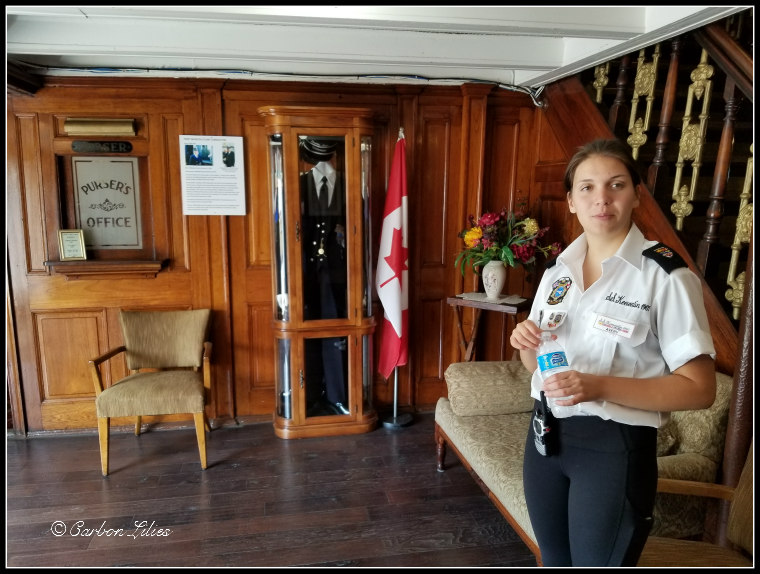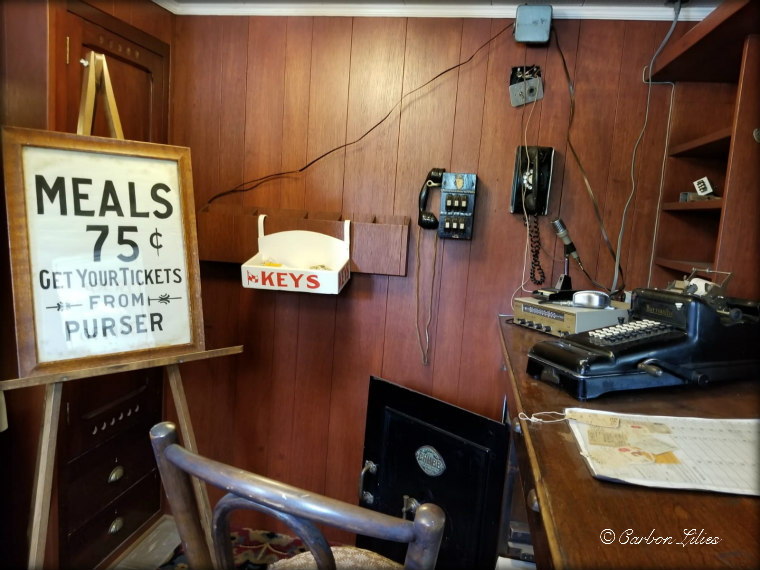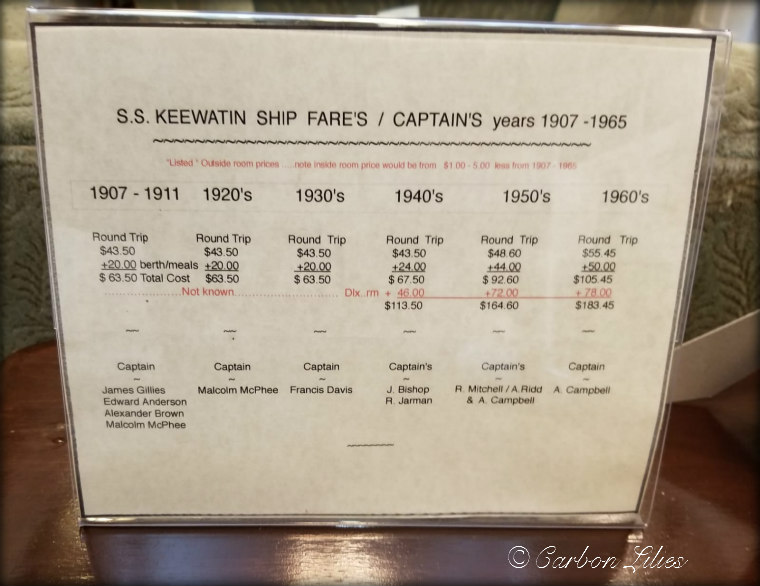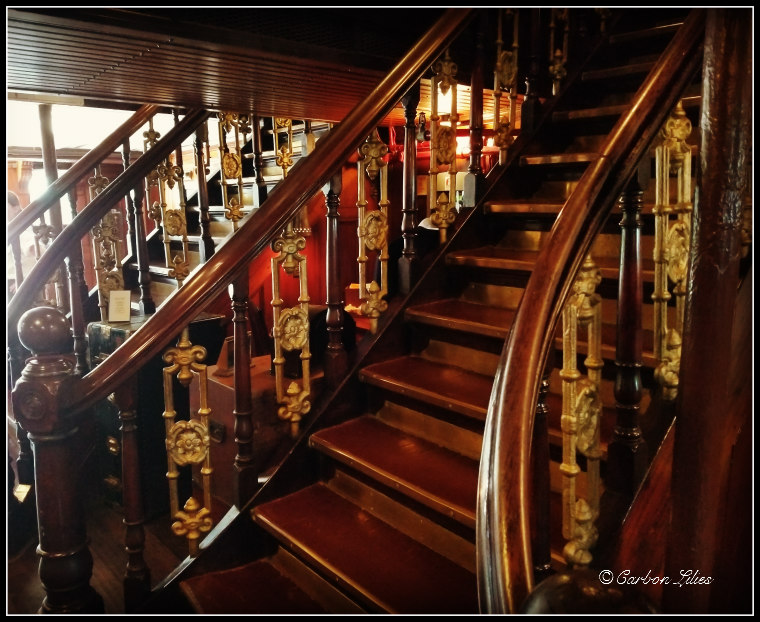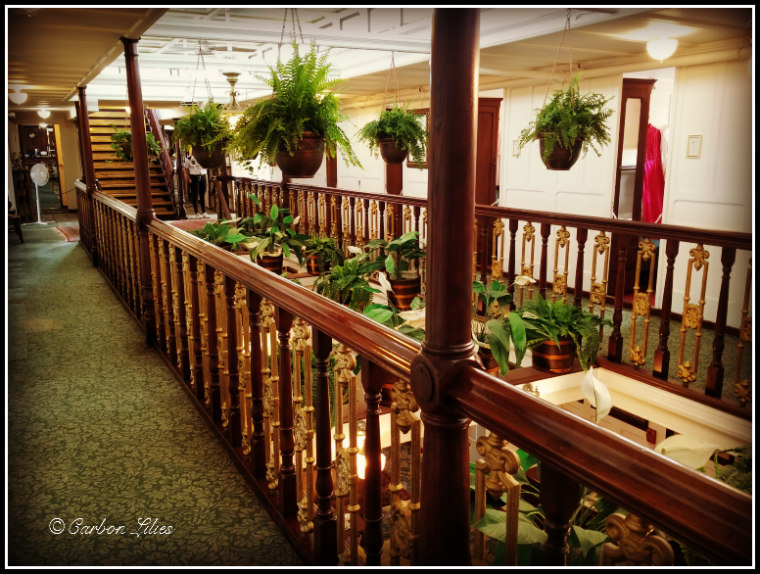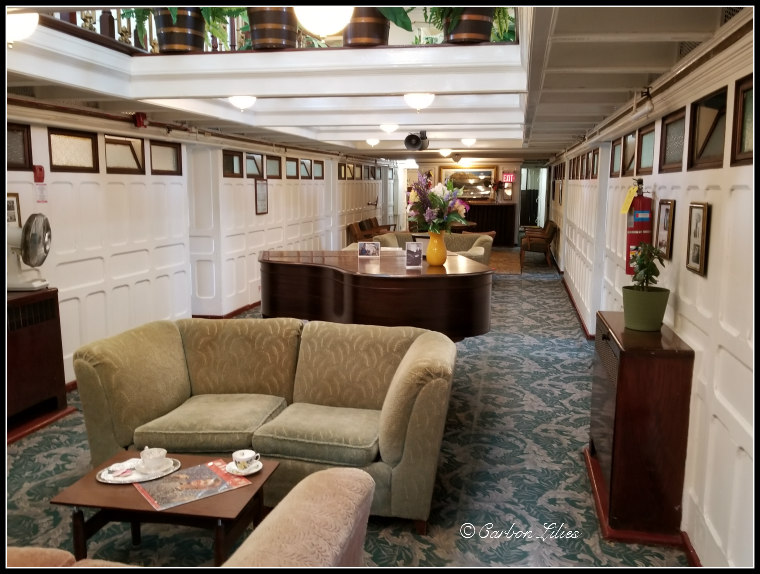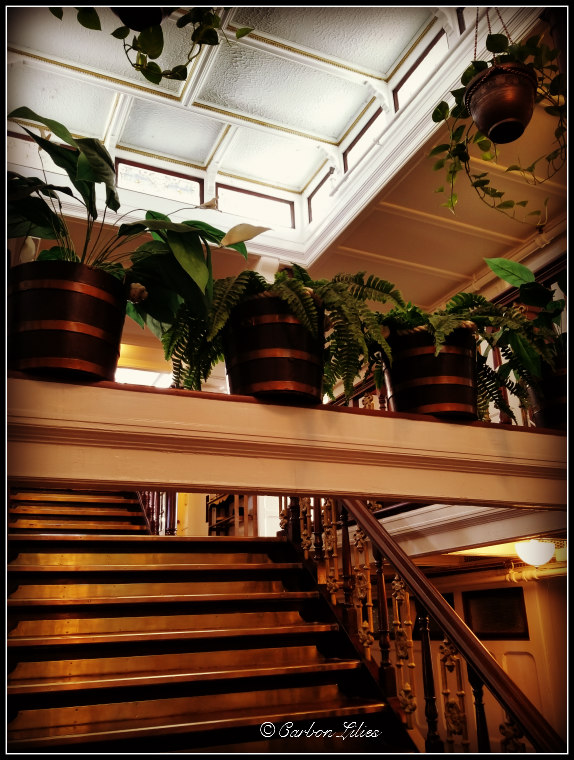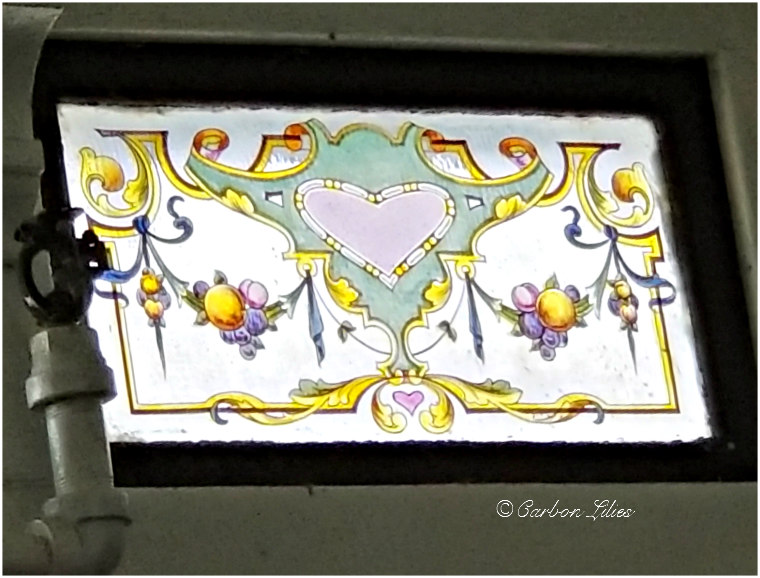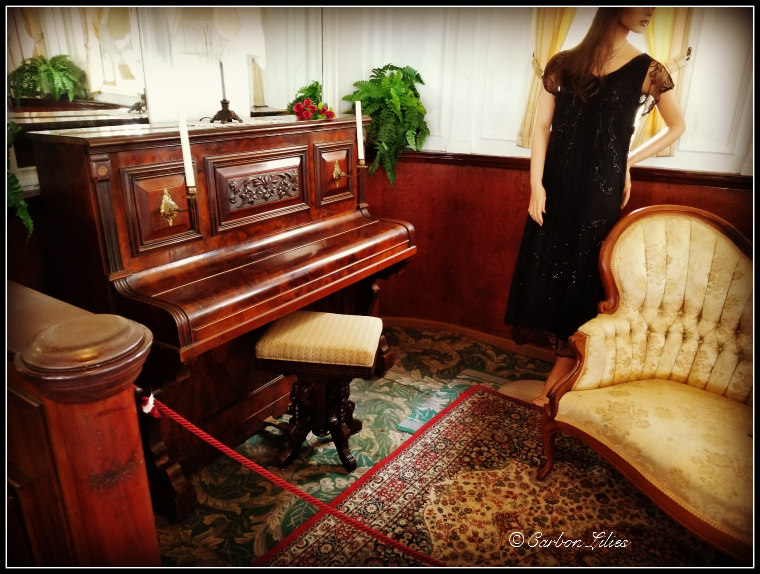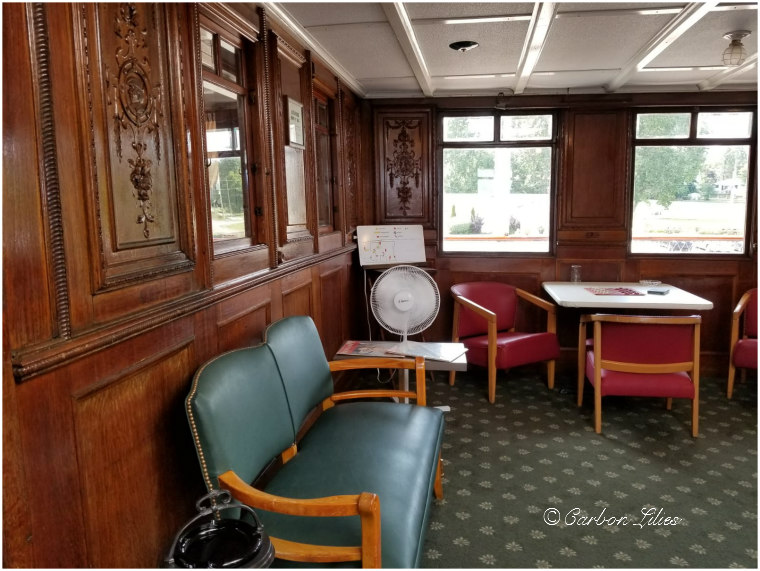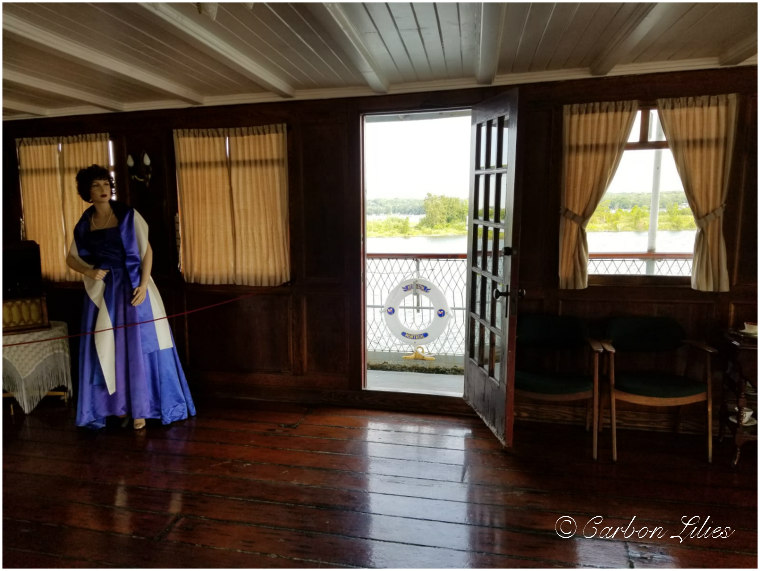SEPTEMBER 20TH, 2018
By LANA CARBON & JOHN LILIES
[Lana] The first place we had actually planned on visiting during our time away was the town of Port McNicoll, which is home to the S.S. Keewatin. This luxury passenger ship was built in 1907, travelled our Great Lakes until 1965, and still sits docked as a floating museum to this day. We were quite lucky as it turned out, since John and I were the only ones to show up at our specific tour time, we were treated to our own private tour and were able to take our time.
[John] This is an attraction that I had been wanting to get Lana to, for much of the summer. I was really interested in it too but I knew that Lana would be so excited for an opportunity to tour a ship like this, so I kept it on the radar for a day when we would be able to take our time and enjoy the experience. We honestly could not have asked for a better opportunity. Not only did we have our own private tour of the ship, but the tour guide was knowledgeable and quite friendly. She allowed us to mostly go at our own pace and ask all of the questions we wanted to; this really made for a wonderful experience for both me and Lana.
[Lana] The first thing of interest to note is that the Keewatin was one of the smaller predecessors of the Titanic; a cousin of design so to speak. Not that this is a small ship at all. At a length of 336.5 ft (102.6 m), beam width of 43.8 ft (13.533 m), and depth of 26.8 ft (8.108 m), when it was being delivered from Montreal and to get through the Welland Canal, the ship had to be cut in half to be towed to its destination port. The lock just wasn’t long enough for the ship in its full length, so it was separated and put back together in the water. The Keewatin made the trip without sinking and was reassembled in Buffalo. After running continuously for almost 60 seasons, carrying up to 288 passengers and 86 crew on each journey, the ship was retired from passenger ship duties and is now in fact, the last British-built Edwardian-era steamship in existence.
We went to the main entrance that the passengers would have used when the ship was in use. The purser’s office/room was located here as well as the gift shop and the barber’s shop. The highlight however, was the gorgeous staircase that led up to the second level of the ship. It was masterful woodworking and as we placed our hand on the railing, our guide explained that the grip was specially designed to fit a person’s hand to make it easier to hold on should the weather get rough while they were on the stairs.
[John] It seems, to me, to be strange to feel excited about a staircase railing but as I put my hand on it, I suddenly understood why the design was so important and impressive. It really made me feel like I would have a sense of security had I been out on the stormy lakes so many decades ago. Additionally, to know that the designer of this railing was the same who did the railing on the Titanic a few years later, provided even more of a connection to the history.
[Lana] Upon reaching the top of the stairs, we saw a wall of keys. They have collected nearly all the original room keys, which is quite impressive considering they have had over a hundred years to lose them; they are only missing four or five. I think I have lost more than that in the last five years, let alone how many I would lose over a whole century.
This area also housed the communication station for room service. Ship staff were quick to learn the heavy tippers and were known to give preferential treatment.
[John] One of the cool things about the Keewatin is that many people over the last few years, have visited and/or contacted the museum to donate original pieces that they have been holding. People who worked on the ship and/or their family members, have donated many original artefacts and these cabin keys are among the collection. I love the fact that we can all walk the halls and go inside these rooms and look at some pieces that are original to the ship; hearing stories of people who have visited and told their own stories from when they and/or their family members worked or travelled on the ship.
[Lana] As soon as you step out from the crew section, the difference is immediate. The cabins, while not what I would call spacious, were much larger than the quarters for the crew. Each one we saw was designed in a way it might have been during each separate year the vessel had been in use. In the centre of the ship, between the rooms, was a sitting area with a piano and multiple pieces of furniture where passengers could relax and mingle. Of course, the downside of this section was that it was also the area where they took the victims of seasickness since it was the most stable part of the ship. Nothing says, “How do you do?” like clammy hands and a wonderful green complexion… unless you are Kermit the Frog.
The Flower Pot Lounge was a beautifully unexpected area that you could view from both the second and third decks of the ship. It made me think that John’s green thumb would go wild trying to contribute to the care of these plants should we have ever been passengers back in the Keewatin’s voyaging days.
[John] I don’t really have a green thumb. I like plants and flowers and a few years ago I discovered the enjoyment of gardening and pulling weeds. To say that I have a green thumb though, might be a significant exaggeration from a slightly biased husband. Just sayin’.
[Lana] My bias… or it may just be your modesty.
[John] Nonsense, silly.
Considering how many flower pots are on this deck, yes it likely would have been an interest to me in that era.
[Lana] Next, we were led to the bow of the ship where we saw the mechanism that was used to raise and lower the anchor. The chain links were massive and apparently hand-made. Our guide showed us the damage in the ceiling where one of these massive links had broken and the chain flew up with enough force to dent the metal.
[John] Looking at the size of these chain links makes it incredible to me that they could be hand-made. Also, how incredibly scary it would have been for one of those links to break and the damage it caused. That would not have been a minor incident at the time.
[Lana] We climbed a steep set of stairs and found ourselves outside on the front deck of the ship. It was a beautiful view looking out over the water but I saw something else with which I was eager to interact; a large bell was hanging right near the captain’s cabin. As soon as I was given the okay, I rang that bell, which was much louder than I had expected. It once was a warning to all that the ship was about to start its voyage. A short walk along the side of the ship ended our time outside as we entered back inside on its luxurious third floor.
[John] I spotted the bell before Lana did and I immediately knew what would happen once he saw it. The glee in his eyes when he was told he could ring that bell, was that of a small child on Christmas morning in front of a pile of massive wrapped packages all with his name on them. He may have regretted the bell-ring however, once the volume hit. I think his head was spinning and his ears were ringing for quite some time after. It was fairly loud.
[Lana] Oh, it was so worth it. I truly don’t know why I didn’t expect it to be as loud as it was but I was so delighted indeed.
On the third floor, just as it was on the floor below, each of the rooms was decorated with items that would have been found in one of the specific years the ship was active. Of course, these rooms were both larger and nicer than the rooms from the floor below.
At the front of the ship was the ladies’ sitting room. Here the women could meet together to smoke, gossip, listen to music, and even read. The men’s smoking lounge lay at the opposite end of the vessel. I always find it so odd to see these rooms dedicated to those separate genders. I am so glad times have changed since those days. At least they were allowed to mingle in the ballroom which, though now covered by a roof, was open under the stars of the nighttime sky back in the day.
[John] Times probably haven’t changed quite as much as we would like to see or even as much as we think they have but yes, definitely happy that we aren’t separated in quite the same way today.
[Lana] We then passed into the opulence of the dining room. Everything inside was gorgeous although I must admit, I would never have been able to fit between the table and where the chair had been bolted to the floor. Our guide told us that the television show, The Murdoch Mysteries, while shooting an episode in this dining room, donated all of the authentic era set pieces for the Keewatin to keep and display. We also heard the story of the waiter who, one night, accidentally ordered one steak too many. Upon learning of his error, and knowing the trouble he would be in if his mistake was discovered, he hid the steak in an empty drawer. After everyone left the dining room, he had to get rid of the evidence. In those days, the crew were not fed nearly as well as the passengers so I imagine you can guess where the steak disappeared to that night. Since he had clearly gotten away with it, an extra steak was ordered each night going forward. To this day, that drawer still has the grease stain from many an evening of hidden meals.
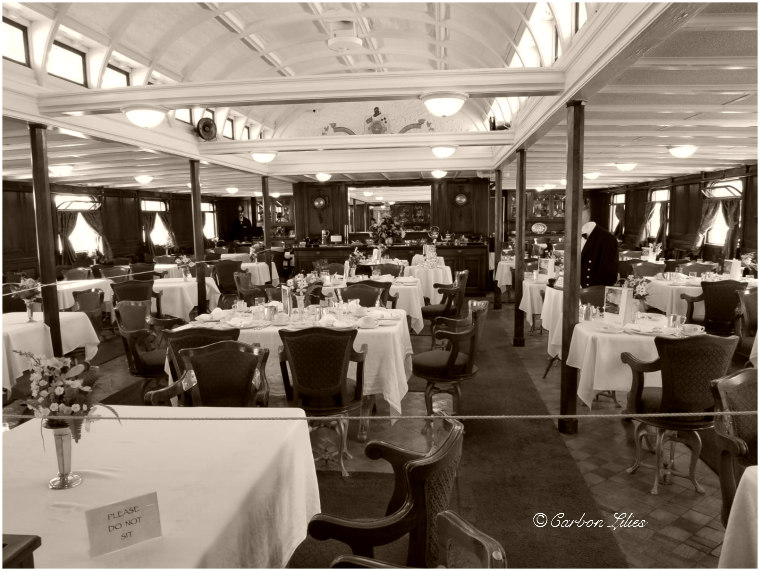
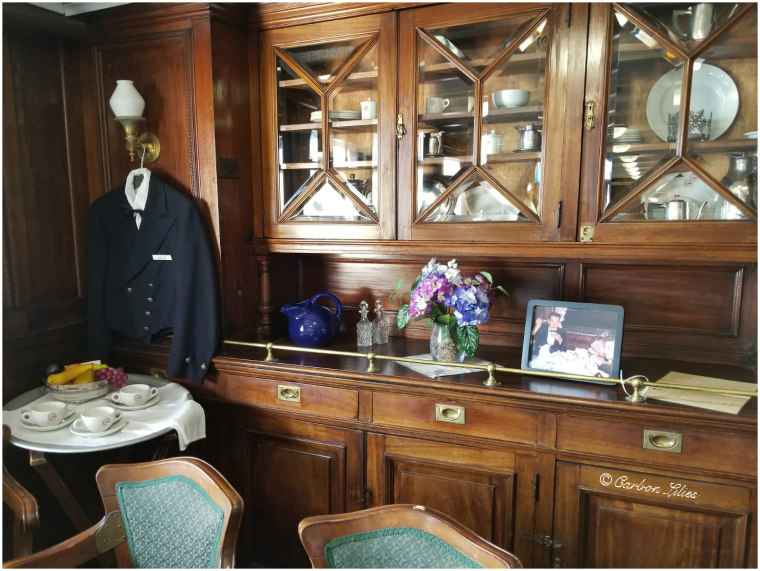
We proceeded through, what I imagine would have been, a stifling hot kitchen.
[John] No doubt there. On this day it was really hot for us and if that kitchen had been running and filled with workers, I don’t know how they would have been able to handle it. I would have been passing out from heat stroke without a doubt. I gained a huge appreciation for what those employees would have gone through and likely without much choice, as employment was not so easy to come by for many especially if English was not one’s first language, as was the case for the majority of these kitchen workers.
[Lana] Here we saw some dishware labeled with the ship’s name, which we would find out later had a story of their own. These dishes, it seems, had disappeared the year the Keewatin had been retired from active duty. Believed to have been stolen and all hope of recovery given up, it was a mystery that left many people baffled for decades. It wasn’t until they were refurbishing the ship in the hallway of the crew’s rooms when they realized the pattern of doorways did not match the way that it should. On a hunch, they broke through the wall and discovered there was a room that had been plastered over. Inside, aboard the ship the entire time, were the historical pieces everyone thought long since lost to time.
[John] The theory is that one of the original crew members had hidden the dishes before the ship’s official retirement, intending to return and steal away the treasure but never did find his way back. What a cool surprise to find these dishes after so many years.
[Lana] The final leg of our tour took us below deck to the cargo hold and into the engine room. Our guide showed us some of the markings on the walls up near the ceiling, just to demonstrate how high the cargo would be piled in the section we were now walking through. We then followed tight walkways into the true power centre of the ship and, let me just say, the engine was massive. I can’t even imagine working down in that section of the ship with the heat, noise, and the coal. I must admit though, it was pretty awesome to see the old engine crank the piston even if it was just once and no longer run by coal.
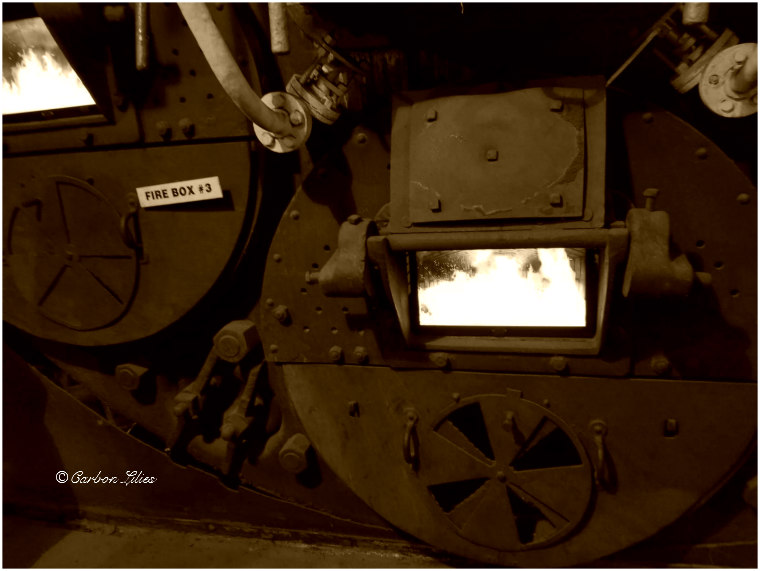
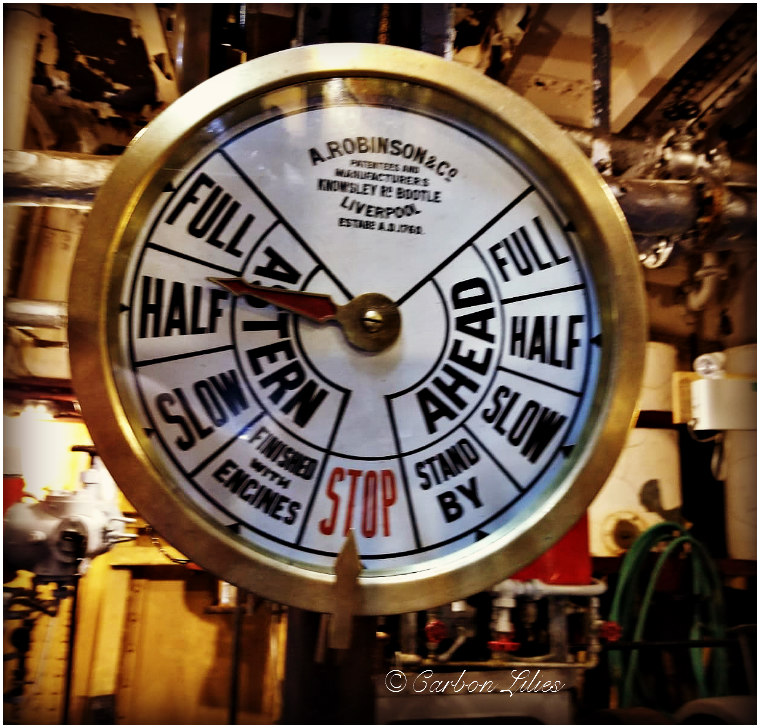
[John] Yes, our guide offered to run the engine for one rotation for us and we excitedly agreed. After she rang a warning bell to alert the others on the ship with us, she started up the engine. I felt a swirl of anticipation, having never seen an engine like this run and despite how slow the movement was, it was so impressive to see. Moments like these really put my mind back in time and I was immediately drawn to thoughts and images of what it would all have been like back in its era and the amount of organization required to ensure safety for all and a smooth ride.
[Lana] We were led out of the belly of the ship towards the small modern souvenir/gift shop they had set up where our guide bid us a fond farewell and thanked us for being so interested and interactive. We truly appreciated her knowledge and allowing us the time to check things out at our own pace. We did pick up a couple of items from the shop before returning to solid ground once more.
[John] Realizing we hadn’t yet eaten a proper meal since early morning, we drove back into the heart of Midland and found a little pub to sit down at and reflect on our great, albeit really hot, day. A nice and relaxing meal at Cellarman’s Alehouse cooled us off and re-energized us (somewhat). We eventually left there, went for a nice and cold ice cream treat and returned to the hotel for some good sleep (it wasn’t long after sitting on the bed that I was out cold, done-in for the night).
[Lana] It had been a full day since first arriving in Midland, so we needed the rest. After all, we still had plans to visit Discovery Harbour the next day.
